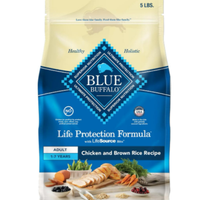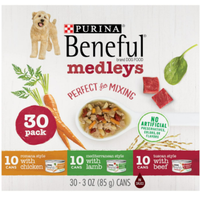Should you follow a dry dog food diet? Our vet answers
Is dry food best for your dog? As a vet, here’s what I think dog parents should consider
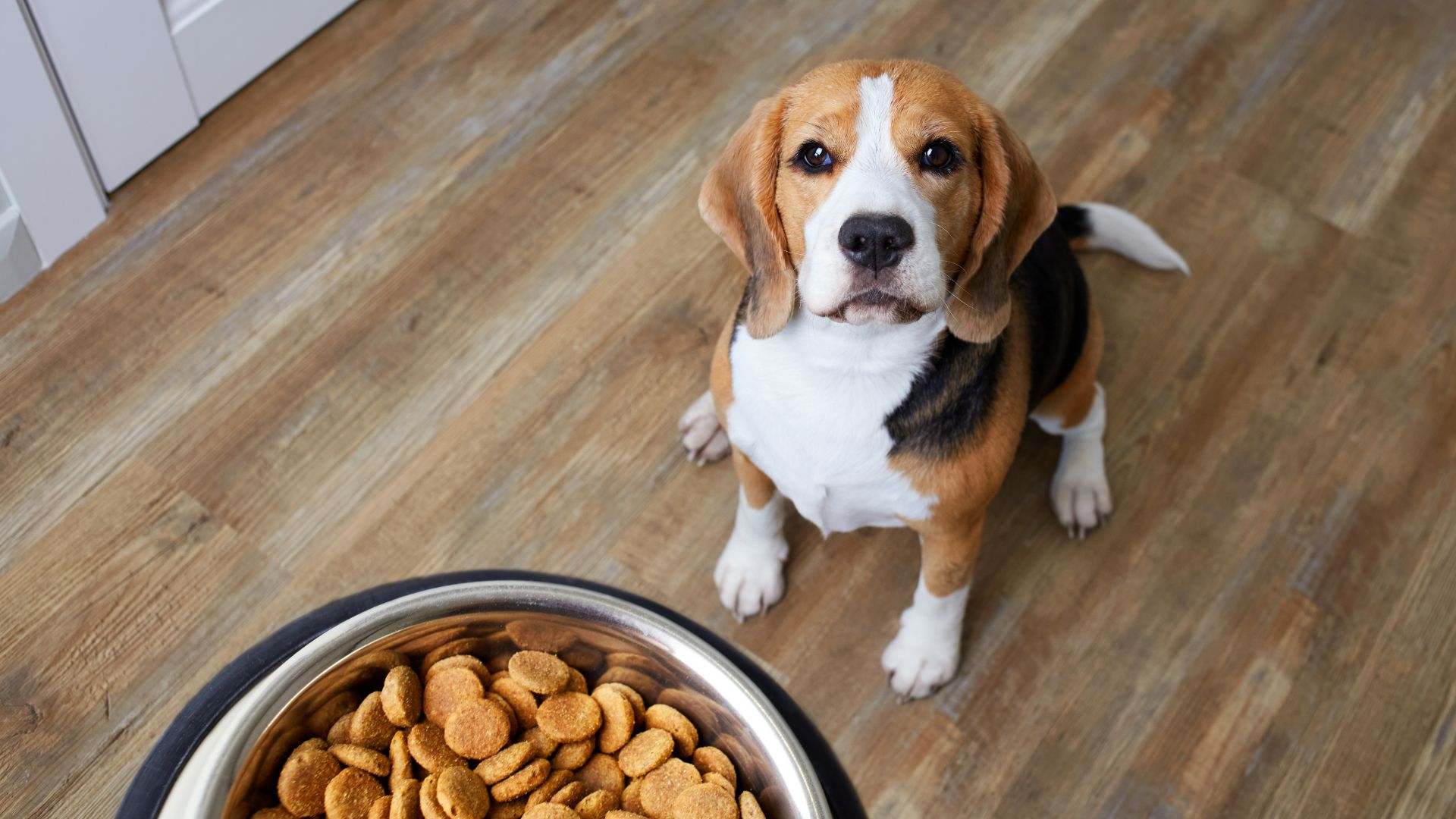
With so many dog food options, you’re probably left wondering “Is dry dog food best?” We get it. With so many opinions on wet food, a raw food diet, or a mixture of wet and dry dog food meals, it can be hard to narrow down which is the best option for your dog.
What to feed your canine can be the center of many discussions, with everyone having strong opinions on what you should do. This can be particularly overwhelming for new dog parents as they navigate feeding.
But with the right amount of research, you can decide if the best dry dog food is actually best for your canine. We also always recommend working with your vet for support in feeding your dog. But for now, let’s check out all the ins and outs of dry dog food and determine if it’s the right fit for your pooch.
How is dry dog food made?
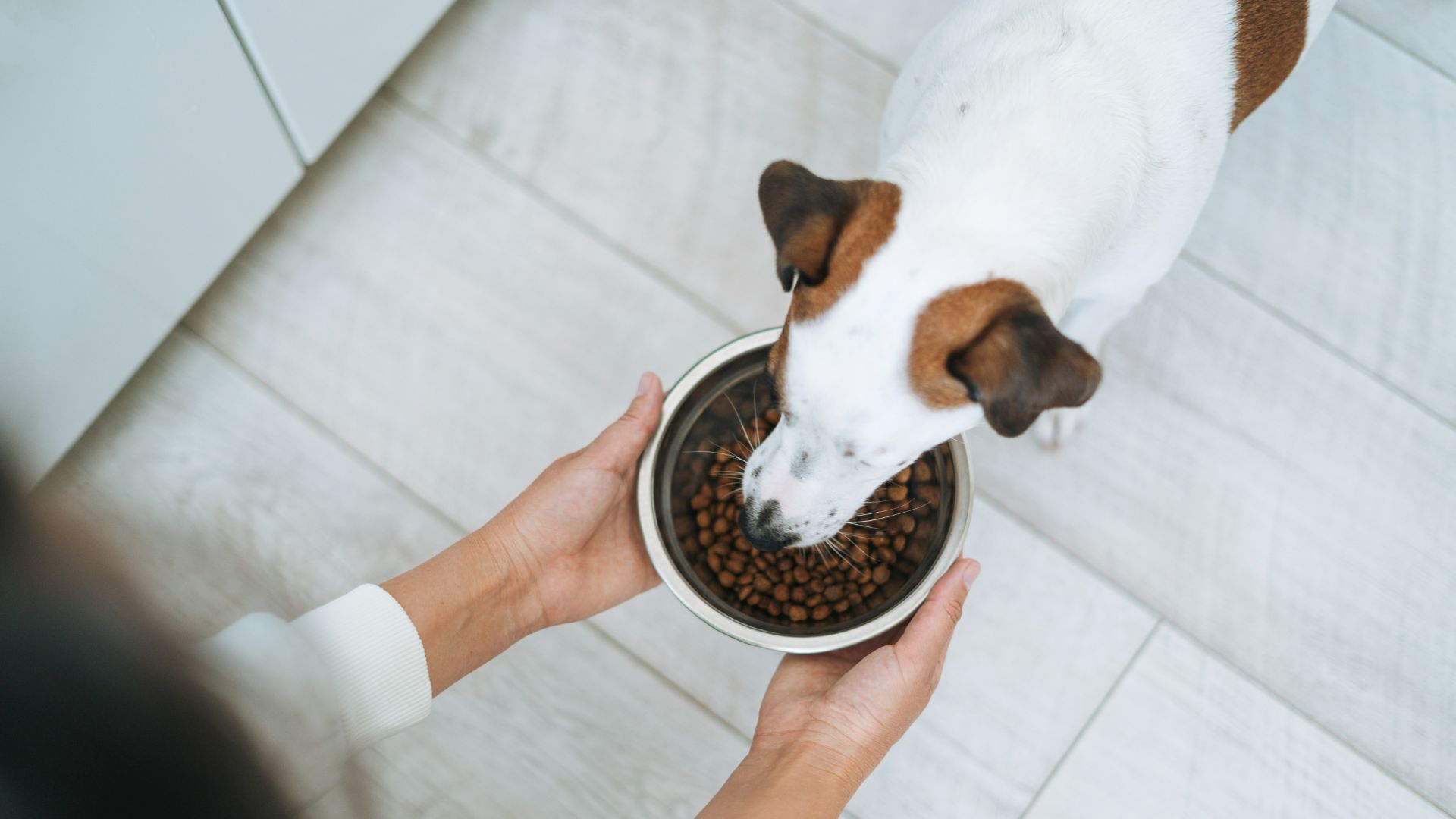
So what exactly is in dry dog food? A dry diet, biscuit diet, or kibble diet is a processed pet food diet. Ingredients are added, blended, cooked, and then formed into biscuits. These can be various shapes and sizes, and you may even find diets with several shapes in the mix.
The food-making process involves removing most of the water, resulting in a diet that is 6-10% moisture – hence ‘dry’. Each stage of the dry dog food production process is highly controlled.
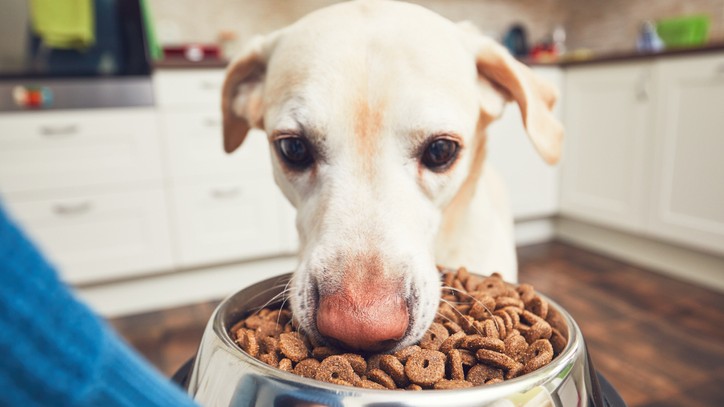
Dry dog food can be found in a huge range of brands and sizes, from boutique bags made in very small kitchens right up to supermarket brands in 25kg bags. The choice is somewhat bewildering, and they’re all vying for your purchase.
For your dog’s main diet, buy foods that are complete and balanced, as there are more and more foods available that are designed as toppers to sprinkle on your dog’s usual diet.
These are labeled as “Complementary” foods and do not contain all the nutrients your dog needs to thrive.
Blue Buffalo Life Protection Formula Adult Dry Dog Food | Amazon
Real chicken is the first ingredient on this list and is followed by all-natural brown rice, cranberries, and vegetables. The high-protein content of this food is made to help promote strong muscles and support a healthy immune system.
Reasons for dry dog food
Dry diets have lots of potential benefits for dogs, as well as for their pet parents. For dogs, eating a dry diet has been purported to increase dental health. There is surprisingly little evidence for this unless the dry diet is a specially formulated ‘dental’ diet.
Many dry diets have some dental care ingredients added, but any improvement is likely to be minimal unless you buy one of the Veterinary Oral Health Council approved foods.
One advantage of dry dog foods is that they’re good for picky eaters. Because every piece of kibble is identical and contains the same nutrients, dogs can’t pick out the bits they prefer and end up unbalancing their diet.

Another advantage for pet parents is that a dry diet is often less expensive than some of the best wet dog food options. Not only are you not paying for water in the food, but shipping is generally cheaper, too. It’s also potentially better for the environment, as there’s a lot more nutrition in a smaller, lighter product, and shipping the product produces less CO2.
Logistically, feeding dry food is often easier, especially if you have a large dog breed - opening several cans and hoping they don’t go bad in the bowl if your dog leaves his food isn’t ideal.
Reasons against dry dog food
Many dogs will thrive on a dry diet, but some dogs can struggle. Dry food is often not as tempting as wet food – so if your dog won’t eat kibble or has always been fed wet, they may be less likely to find a dry food that they like.
Dogs that suffer from kidney problems, bladder problems, and crystals or stones in the urinary tract may do better on wet food; whilst dry food can work for these dogs, many may need wet food to increase their water intake. The same is true for dogs that seem to drink too little despite the heat – a little added water can be a good thing.
Some dogs – especially small breeds and those with flat faces like many brachycephalic breeds - may find eating kibble difficult; a combination of breathing problems and dental problems can mean that these dogs may prefer to eat a high-moisture diet. Many dry dog food brands have biscuits that are too large for very small dogs, which can be a problem.
What about wet dog food?

A wet dog food is any food that comes in a can, tin, tub, or pouch. They’re called wet foods because they have a 75-80% moisture content. You may find wet dog foods in pate-style, chunks in gravy, or even with recognizable pieces of meat and vegetables. Make sure you’re looking at foods that are “Complete and balanced” though.
Some wet foods are complementary foods which means they don’t have everything your pet needs to thrive, and should only be fed as an occasional treat or topper, not as a main meal. If the food contains everything your dog needs, it’ll have the AAFCO (US) or FEDIAF (UK) label claim.
Benefits of wet food
Wet diets are much more affordable for smaller dogs than they are for larger dogs, which is good, as these breeds are the ones most likely to struggle with a dry food diet. A wet diet removes the difficulty of finding the right kibble size for your dog if they’re tiny. Small dogs are often fussier too and wet diets may be more appetizing for these dogs.
Wet diets are up to 80% water, which can mean your pet taking in a larger amount of water and producing more dilute urine - great if you have a pet with urinary stones or that doesn’t drink enough on hot summer days.
Dogs prone to dehydration due to kidney disease, Cushing’s disease or diabetes may also benefit from canned dog food. And, talking of diabetes in dogs, wet diets tend to have lower carbohydrates, which may help diabetic dogs not to have a large blood-sugar rise after eating.
Purina Beneful Wet Dog Food Variety Pack | Amazon
Your pooch will be spoilt for choice with this medley pack containing lamb, beef, and chicken. No matter which option you choose, you can rest easy knowing that all are made with high-quality ingredients to support your dog’s overall health.
Drawbacks of wet food
In my experience, dogs fed wet diets are more likely to be overweight. However, this may not be down to the wet diet itself. Because wet foods often come in cans and tubs, we rarely weigh the food but instead say ‘half a can’ – which is inaccurate and likely leads to overfeeding. And if, like me, you’re guilty of not wanting to leave a ‘silly amount’ in the fridge overnight, you probably overfeed on an almost daily basis.
In addition, excepting the pate-style diets, wet food diets do tend to favor picky dogs, allowing them to take out the bits they like and leave the bits they don’t - which can result in unbalanced nutrition. Wet diets are also harder to store, taking up a lot more space than dry foods, and expensive to buy and ship, often with excessive packaging to boot.
Is dry dog food the best option?
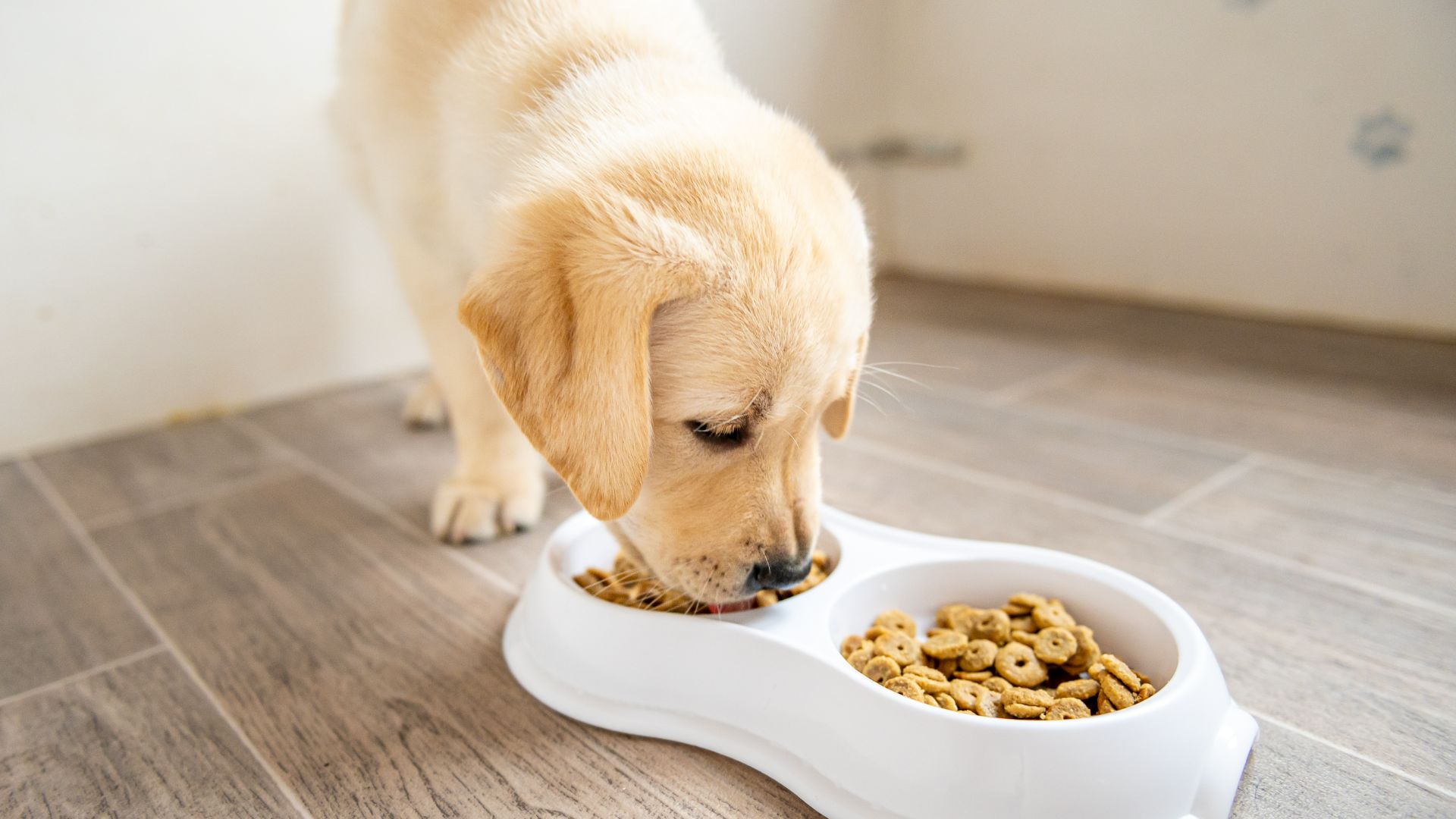
As long as the diet you choose is “complete and balanced”, and your dog is doing well on it, what you feed your dog is up to you. However, if you find your dog is suffering from regular stomach upsets that may suggest a food allergy or intolerance, you may need to consider a switch.
Try taking a look at our guide to the best dog food for allergies for some options that may suit dogs with sensitive stomachs. Dry food is usually cheaper and easier to store than wet food. It may seem boring to us humans, but dogs rarely get bored of their food and don’t seem to need a large variety of options.
Having said that, having a few cans of wet food to give on hot days or to stuff Kong-type toys with is a great idea; just don’t forget to take the calories out of your dog’s allowance so as to avoid obesity.
Finding high-quality, well-tested food is important, though, to avoid potential problems. Pet parents might like to explore the World Small Animal Veterinary Association (WSAVA) guidelines to help them to find quality dog food.
Found this helpful? Check out How much should I feed my dog or surprising things dogs can eat besides dog food.
Edited by Georgia Guerin and Megan Milstead
Recent updates
Last udpated March 13, 2025 by Alexis De Leaver
PetsRadar Newsletter
Get the best advice, tips and top tech for your beloved Pets
After graduating as a vet from the University of Nottingham in 2016, Dr. Joanna Woodnutt went on to practice companion animal medicine in the Midlands. She quickly developed a love of consulting and helping clients with medical problems such as dermatology, behavior and nutrition - anything that involved helping clients understand their pets better.
Jo started writing about pet health in 2017, realizing that it meant she could help even more pet parents. Since then, she has written for countless online and print publications and is a regular contributor for Edition Dog Magazine. Jo is the director of The Veterinary Content Company, which she founded in 2020. She is also the founder of Petlearnia, a platform that provides pet e-learning courses for pet parents.
Jo now lives in the Channel Islands with her husband Ian and terrier Pixie.
- Alexis De LeaverDigital & Syndication Staff Writer
